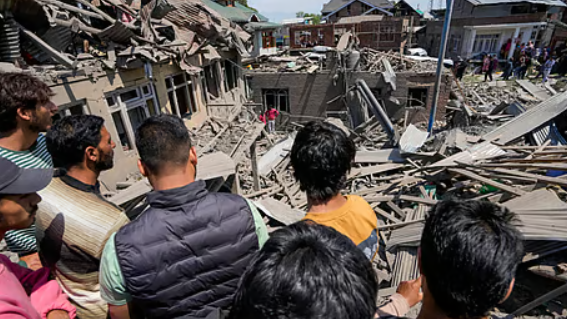

Pahalgam: Once celebrated as Kashmir’s crown jewel of peace and tourism, Pahalgam turned into a scene of chaos and horror as a sudden terrorist attack disrupted the illusion of safety. On what seemed like a normal day in the picturesque town surrounded by alpine meadows and winding rivers, militants opened fire at a bus carrying tourists, injuring several and sending shockwaves across India.
The question haunting intelligence and security agencies now is: how did terrorists manage to infiltrate such a tightly monitored region and strike where no one expected?
Preliminary investigations reveal that the attackers were not recent infiltrators from across the Line of Control, but likely local recruits with deep knowledge of the terrain. Intelligence sources say these terrorists may have received logistical support from local sympathizers, a possibility that has only intensified after initial combing operations failed to locate the perpetrators.
“This isn’t just an act of violence—it’s a carefully planned operation, and it couldn’t have happened without insider help,” said a former J&K police official who has served extensively in South Kashmir.
Locals in Pahalgam, however, are grappling with fear and disbelief. A tea vendor near the main market said, “We always thought Pahalgam was safe. Tourists bring life to this place. Whoever did this wants to destroy our livelihood and reputation.”
Security experts believe the attack has hallmarks of a new strategy by terror outfits operating in the region—one that focuses not on military targets or remote patrols, but on high-visibility, high-impact civilian locations. Hitting a tourist bus was designed to draw maximum attention, disrupt the economy, and provoke panic at the national level.
Sources in the intelligence community suggest that overground workers (OGWs)—locals who aid terrorists with shelter, transport, and information—played a pivotal role. OGW networks have been notoriously hard to crack due to their integration within the civilian population. Surveillance footage and mobile tower data are currently being analyzed to trace how the attackers moved and where they may have stayed.
“This was not a random act. It’s part of a well-thought psychological war, and sadly, we are playing catch-up,” said an army official stationed nearby, under condition of anonymity.
The route the attackers used is still unclear. Some officials suspect they slipped into Pahalgam from Anantnag, a district that has seen increased militant activity in recent months. The fact that they could carry arms, execute an attack, and escape suggests a significant security lapse or a diversionary tactic used to stretch thin the deployed forces.
Amid the chaos, tourists have begun to leave Pahalgam in large numbers, with bookings being cancelled across the board. This is a huge blow to the local economy, which depends heavily on seasonal tourism. “We just recovered from the COVID hit. This attack has put everything at risk again,” said a hotel owner near Lidder River.
The Jammu & Kashmir government has promised swift action, beefed-up security, and zero tolerance. But the fear has already taken root. Is any place in the Valley truly safe anymore? The Pahalgam attack serves as a grim reminder that even the most serene corners of Kashmir are vulnerable when terrorism finds a crack to creep through.